
How to Use Nema 14 36mm Pancake Stepper Motor: Examples, Pinouts, and Specs
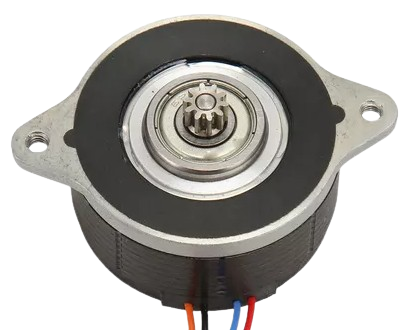
 Design with Nema 14 36mm Pancake Stepper Motor in Cirkit Designer
Design with Nema 14 36mm Pancake Stepper Motor in Cirkit DesignerIntroduction
The Nema 14 36mm Pancake Stepper Motor is a compact and efficient stepper motor designed for precision motion control applications. With a body length of just 36mm, this motor is ideal for projects where space is limited but high torque and accurate positioning are required. Common applications include 3D printers, CNC machines, robotics, and other automated systems.
Explore Projects Built with Nema 14 36mm Pancake Stepper Motor
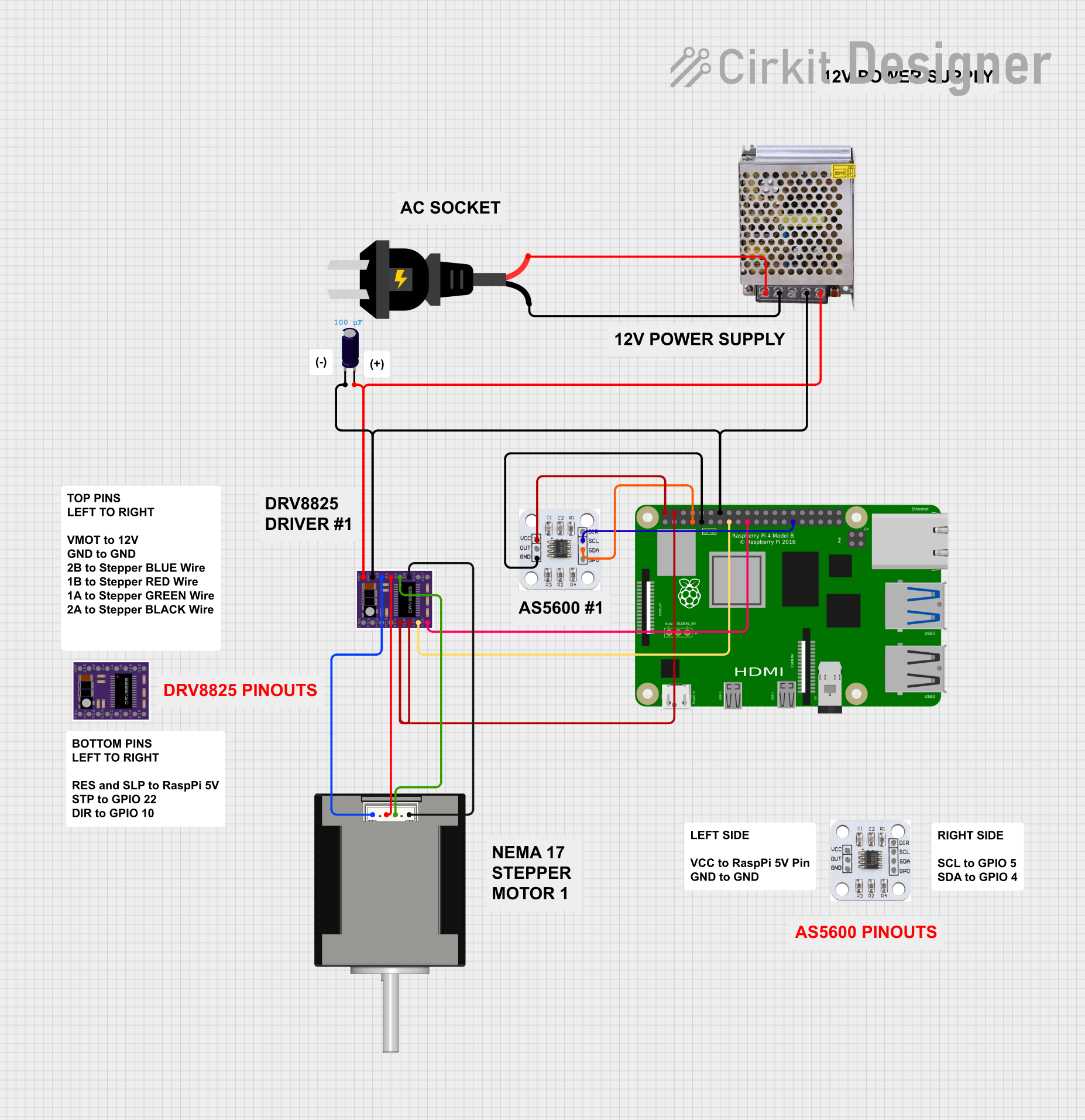
 Open Project in Cirkit Designer
Open Project in Cirkit Designer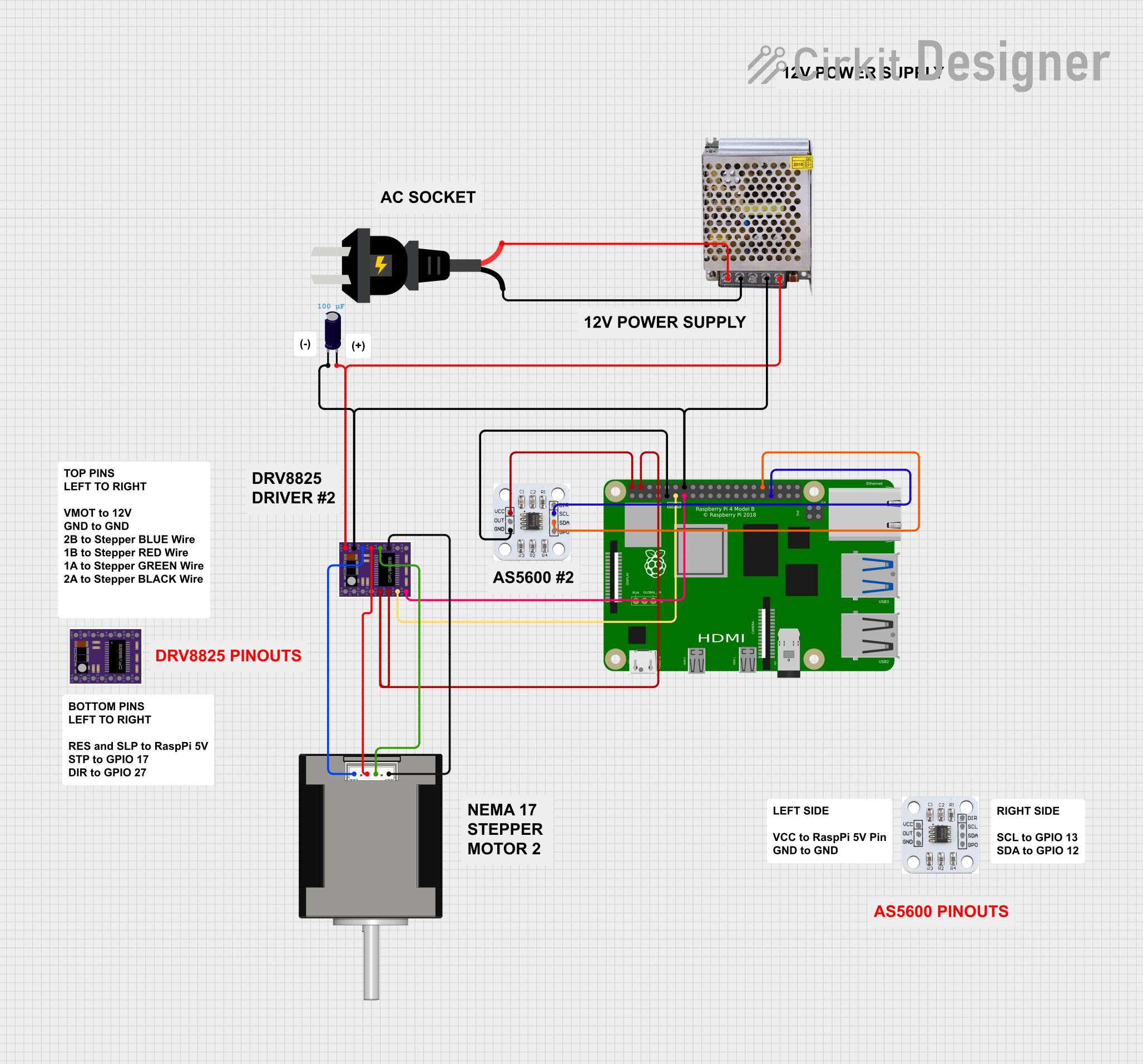
 Open Project in Cirkit Designer
Open Project in Cirkit Designer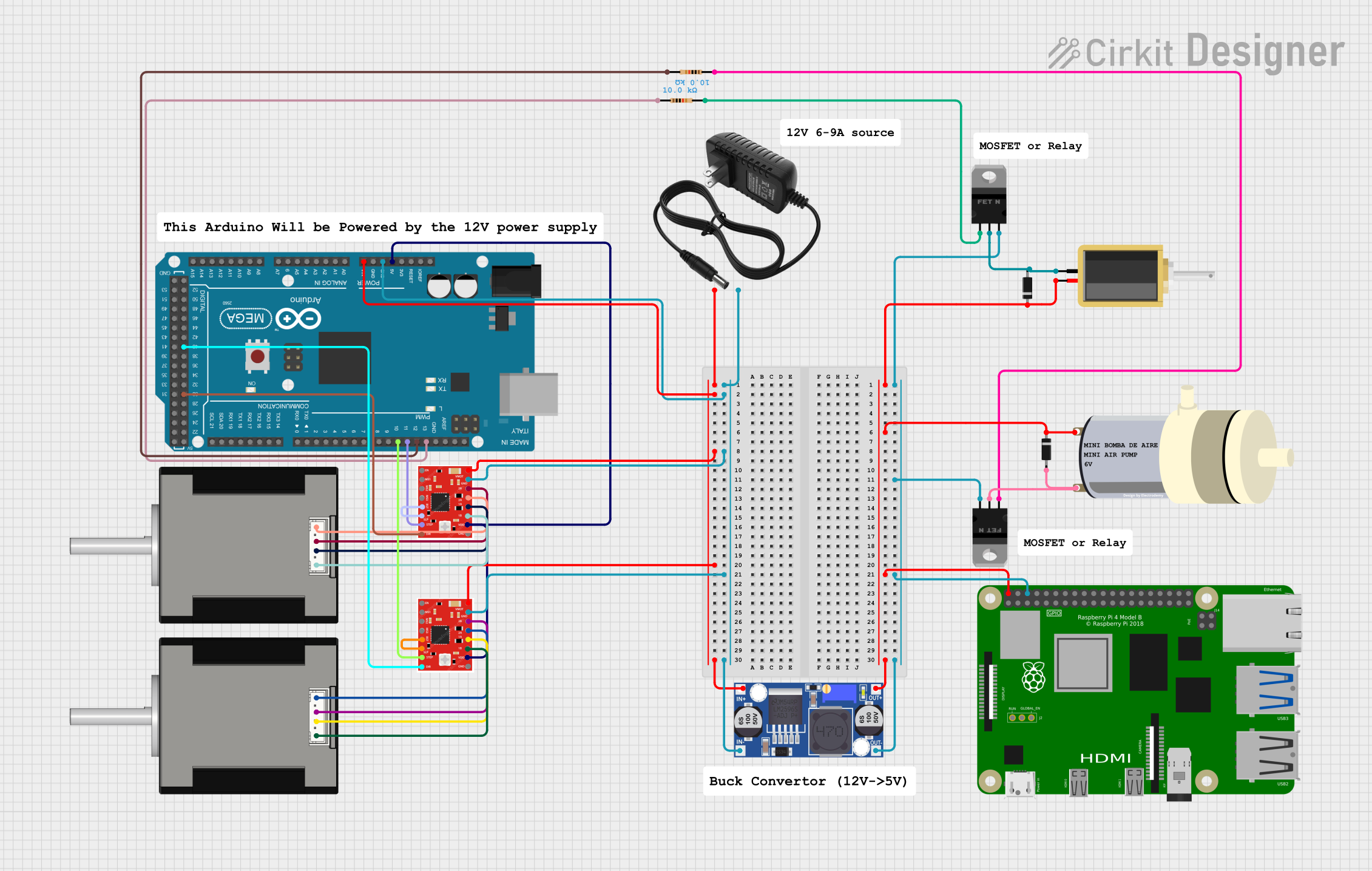
 Open Project in Cirkit Designer
Open Project in Cirkit Designer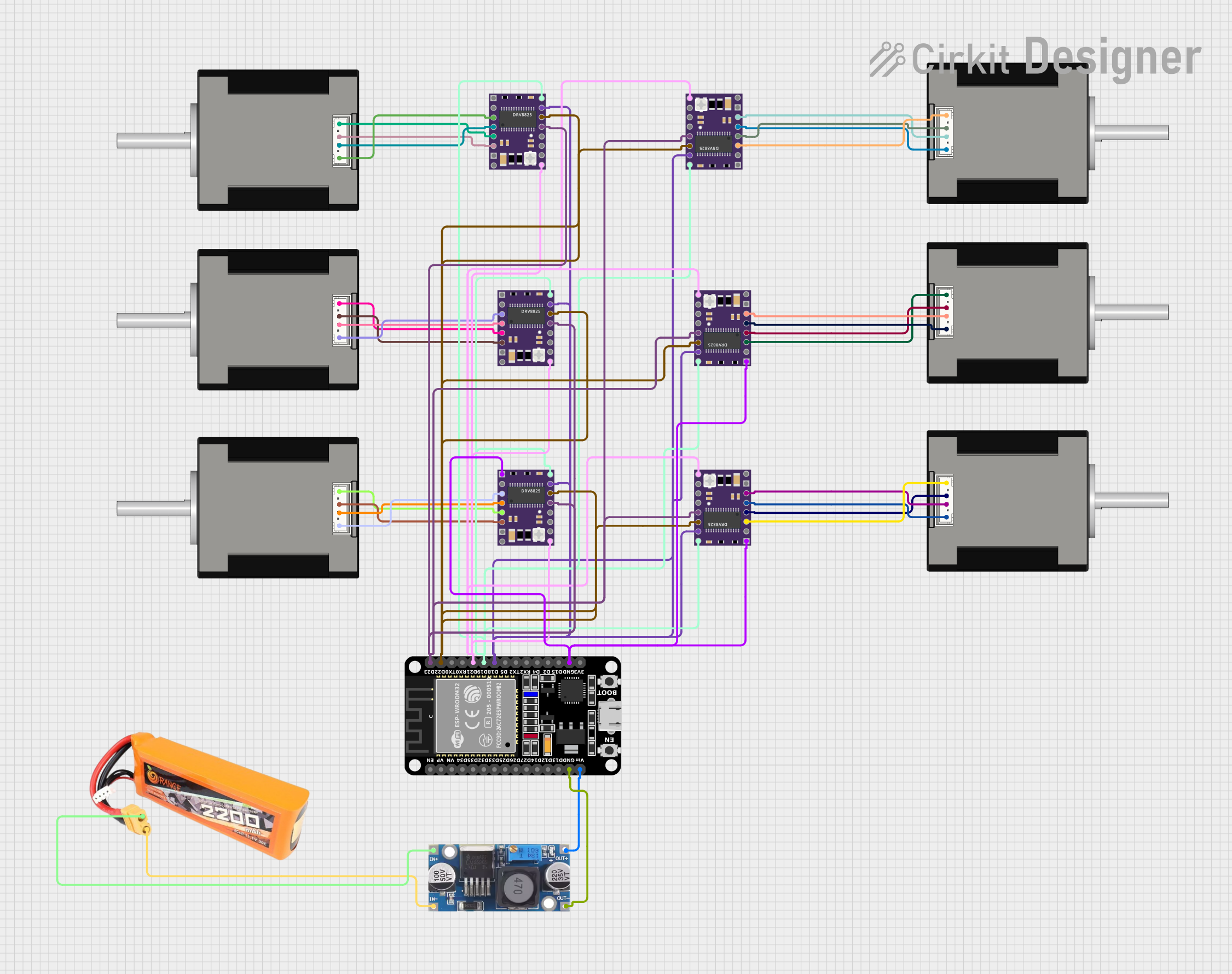
 Open Project in Cirkit Designer
Open Project in Cirkit DesignerExplore Projects Built with Nema 14 36mm Pancake Stepper Motor

 Open Project in Cirkit Designer
Open Project in Cirkit Designer
 Open Project in Cirkit Designer
Open Project in Cirkit Designer
 Open Project in Cirkit Designer
Open Project in Cirkit Designer
 Open Project in Cirkit Designer
Open Project in Cirkit DesignerTechnical Specifications
Key Technical Details
| Parameter | Value |
|---|---|
| Step Angle | 1.8° |
| Holding Torque | 0.22 Nm |
| Rated Current | 1.2 A/phase |
| Voltage | 3.6 V |
| Resistance | 3.0 Ω/phase |
| Inductance | 2.8 mH/phase |
| Body Length | 36 mm |
| Shaft Diameter | 5 mm |
| Number of Leads | 4 |
| Weight | 0.2 kg |
Pin Configuration and Descriptions
| Pin Number | Wire Color | Description |
|---|---|---|
| 1 | Red | Coil A |
| 2 | Blue | Coil A' |
| 3 | Green | Coil B |
| 4 | Black | Coil B' |
Usage Instructions
How to Use the Component in a Circuit
To use the Nema 14 36mm Pancake Stepper Motor in a circuit, you will need a stepper motor driver, such as the A4988 or DRV8825, and a microcontroller, such as an Arduino UNO. Below is a basic setup guide:
Connect the Motor to the Driver:
- Connect the Red wire to the A1 terminal of the driver.
- Connect the Blue wire to the A2 terminal of the driver.
- Connect the Green wire to the B1 terminal of the driver.
- Connect the Black wire to the B2 terminal of the driver.
Connect the Driver to the Arduino:
- Connect the STEP pin of the driver to a digital pin on the Arduino (e.g., D2).
- Connect the DIR pin of the driver to another digital pin on the Arduino (e.g., D3).
- Connect the EN (Enable) pin to ground (GND) if not used.
- Connect the VDD and GND pins of the driver to the 5V and GND pins of the Arduino, respectively.
- Connect the VMOT and GND pins of the driver to an external power supply (e.g., 12V).
Arduino Code Example:
// Define stepper motor connections and steps per revolution
#define dirPin 3
#define stepPin 2
#define stepsPerRevolution 200
void setup() {
// Set the direction and step pins as outputs
pinMode(stepPin, OUTPUT);
pinMode(dirPin, OUTPUT);
}
void loop() {
// Set the direction clockwise
digitalWrite(dirPin, HIGH);
// Step the motor one revolution
for (int i = 0; i < stepsPerRevolution; i++) {
digitalWrite(stepPin, HIGH);
delayMicroseconds(1000); // Adjust delay for speed control
digitalWrite(stepPin, LOW);
delayMicroseconds(1000);
}
delay(1000); // Wait for a second
// Set the direction counterclockwise
digitalWrite(dirPin, LOW);
// Step the motor one revolution
for (int i = 0; i < stepsPerRevolution; i++) {
digitalWrite(stepPin, HIGH);
delayMicroseconds(1000);
digitalWrite(stepPin, LOW);
delayMicroseconds(1000);
}
delay(1000); // Wait for a second
}
Important Considerations and Best Practices
- Current Limiting: Ensure that the current limit on the stepper driver is set correctly to prevent overheating and damage to the motor.
- Power Supply: Use an appropriate power supply that matches the voltage and current requirements of the motor.
- Cooling: Provide adequate cooling for the stepper driver, especially if running the motor at high currents.
- Microstepping: Utilize microstepping settings on the driver for smoother and more precise motor movements.
Troubleshooting and FAQs
Common Issues Users Might Face
Motor Not Moving:
- Check all connections between the motor, driver, and Arduino.
- Ensure the power supply is connected and providing the correct voltage.
- Verify that the current limit on the driver is set correctly.
Motor Vibrating or Making Noise:
- Check for loose connections or wiring issues.
- Ensure the motor is not overloaded or stalled.
- Adjust the microstepping settings on the driver for smoother operation.
Overheating:
- Ensure the current limit on the driver is set correctly.
- Provide adequate cooling for the driver and motor.
Solutions and Tips for Troubleshooting
- Double-Check Wiring: Ensure all connections are secure and correctly matched to the pin configuration.
- Use a Multimeter: Measure the voltage and current to ensure they are within the specified range.
- Consult the Datasheet: Refer to the motor and driver datasheets for detailed specifications and troubleshooting tips.
- Test with Simple Code: Use basic code examples to isolate and identify issues before integrating into a larger project.
By following this documentation, users can effectively utilize the Nema 14 36mm Pancake Stepper Motor in their projects, ensuring reliable and precise motion control.